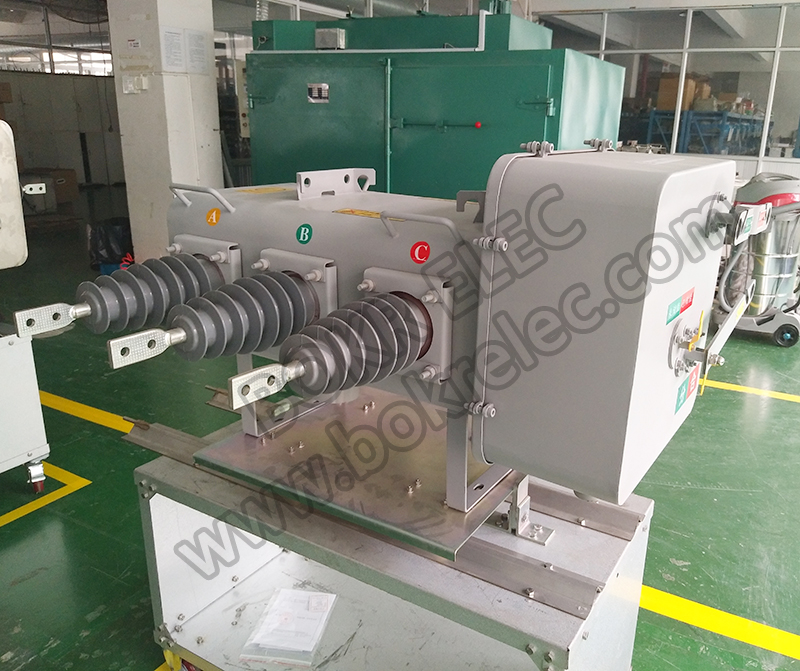Feb. 19, 2024
In the realm of electrical engineering, circuit breakers play a pivotal role in ensuring the safety and efficiency of power distribution systems. Among the diverse array of circuit breakers available, two prominent types stand out: SF6 circuit breaker and Vacuum Circuit Breaker. Understanding the disparities between these two technologies is crucial for selecting the most suitable option for specific applications. Let's delve into a comprehensive comparison to elucidate their differences.
SF6 circuit breakers leverage sulfur hexafluoride, a potent insulating and arc-quenching gas, to extinguish electrical arcs. These breakers are renowned for their exceptional dielectric properties and high thermal conductivity, making them adept at interrupting high-voltage currents.
In SF6 circuit breakers, the interruption process involves the utilization of gas pressure to propel the arc into the insulating gas. The arc is then cooled and extinguished as it traverses the SF6 medium, thereby facilitating reliable interruption of electrical currents.

Superior Dielectric Strength:
SF6 exhibits remarkable dielectric strength, enabling compact designs and efficient insulation.
High Interruption Capability:
These breakers excel in interrupting high-voltage currents, ensuring reliable performance in demanding environments.
Low Maintenance Requirements:
SF6 circuit breakers entail minimal maintenance, contributing to cost-effectiveness and operational efficiency.
Vacuum circuit breakers rely on the principle of creating a vacuum to extinguish electrical arcs. By eliminating the need for external quenching mediums like gas or oil, vacuum breakers offer distinct advantages in terms of environmental impact and operational reliability.
Related links:In vacuum circuit breakers, the arc interruption occurs within a vacuum chamber. When the contacts separate, the ensuing arc is swiftly extinguished as it encounters the vacuum environment, preventing re-ignition and ensuring prompt interruption of the electrical circuit.
Environmentally Friendly:
Vacuum breakers eliminate the use of greenhouse gases, aligning with sustainable practices and environmental regulations.
High Operational Reliability:
The absence of external quenching mediums enhances the reliability and longevity of vacuum circuit breakers, minimizing maintenance requirements.
Rapid Arc Extinction:
Vacuum technology enables swift arc extinction, facilitating quick interruption of electrical currents and safeguarding equipment from damage.
While SF6 circuit breakers utilize sulfur hexafluoride gas as the insulating medium, vacuum circuit breakers rely on a vacuum to extinguish arcs. This variance in insulation mediums significantly impacts the operational characteristics and performance metrics of each breaker type.
SF6 circuit breakers have raised concerns regarding their environmental impact due to the potent greenhouse gas emissions associated with sulfur hexafluoride. In contrast, vacuum circuit breakers offer a more sustainable alternative, as they do not emit greenhouse gases during operation.
Vacuum Circuit Breaker (VCB) generally entail lower maintenance requirements compared to SF6 counterparts. The absence of gas refilling or leakage concerns simplifies maintenance procedures, contributing to enhanced reliability and cost-effectiveness.
In conclusion, the disparity between SF6 and vacuum circuit breakers encompasses various factors, including insulation medium, environmental impact, and maintenance requirements. While SF6 circuit breakers offer exceptional dielectric properties and high interruption capability, vacuum circuit breakers excel in environmental sustainability and operational reliability. Ultimately, the selection between these two technologies hinges on specific application requirements and considerations. By comprehensively understanding their differences, stakeholders can make informed decisions to optimize the performance and longevity of electrical systems.
Related links:Previous: Why Vacuum Circuit Breakers Are Perfect for Outdoor Use?
Next: None
If you are interested in sending in a Guest Blogger Submission,welcome to write for us!
All Comments ( 0 )